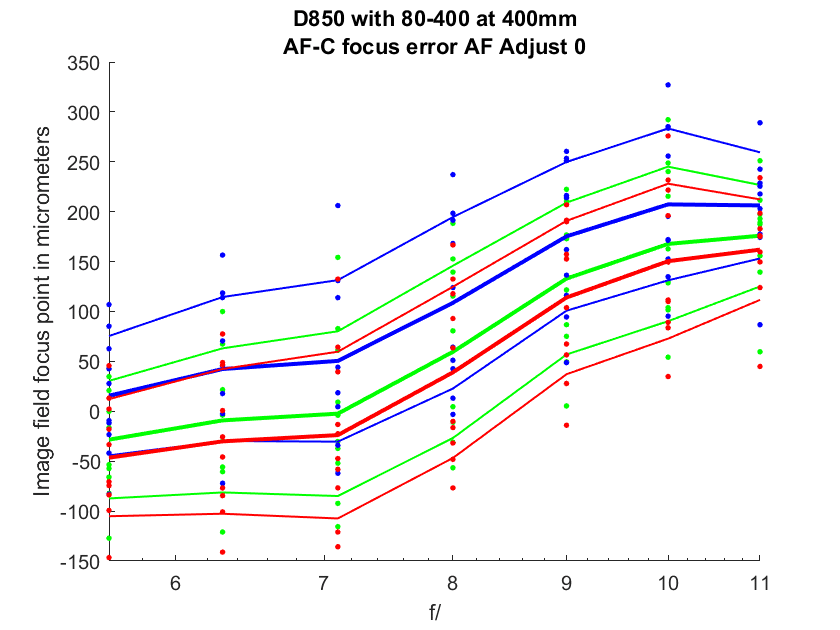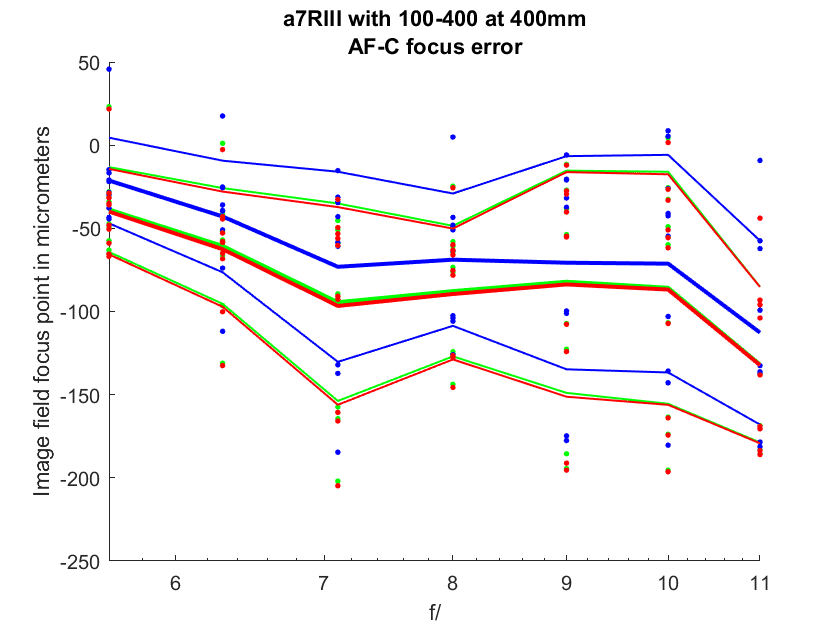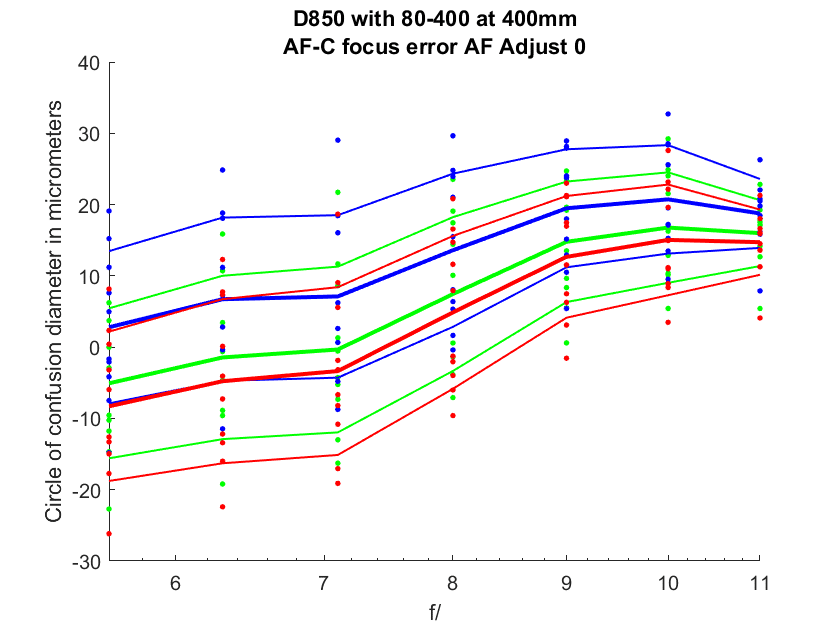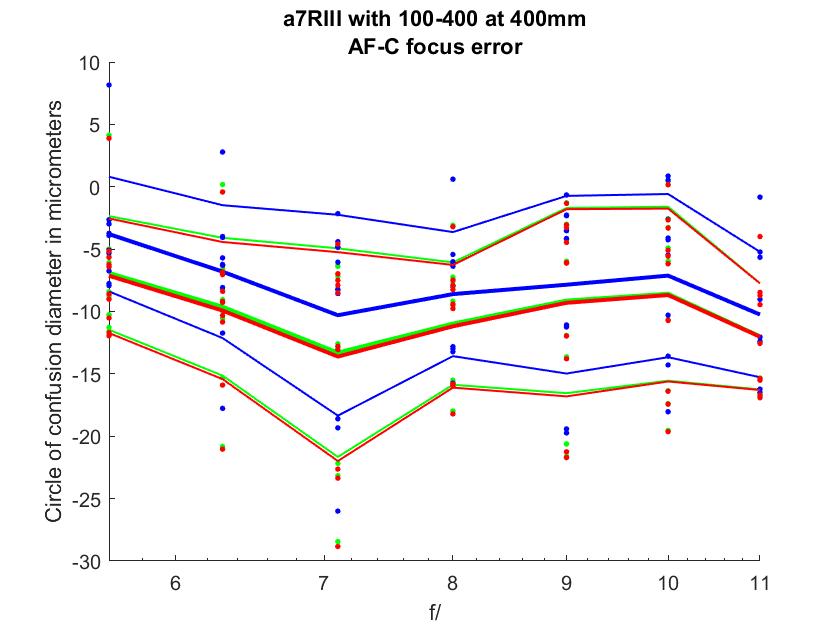This is a continuation of a series of posts on the Nikon D850. You should be able to find all the posts about that camera in the Category List on the right sidebar, below the Articles widget. There’s a drop-down menu there that you can use to get to all the posts in this series; just look for “D850”. This is also a post about the Sony a7RIII, and is also tagged as such.
In the previous post, I compared the AF-S performance of the D850 with the Nikon 80-400 VR II to that of the Sony 100-400 on the a7RIII. Now I’ll do the same for AF-C
The graph presents displacement of the image projected on the sensor from the desired green-channel focal plane. Negative numbers indicate front-focusing. The image-plane shift is in micrometers (um). The blue focus locations are separated from the red and green ones because of the longitudinal chromatic aberration (LoCA) of the lens. The dots indicate the results for each of the ten exposures at each f-stop. I’ve made lines indicating the average (aka mean or mu) of the sample set bolder and added thin lines above and below the means that are one standard deviation (sigma) away from it.
The Nikon lens and camera starts off on average focusing properly and becomes more back biased as you stop the lens down. The Sony starts off front focusing and becomes slightly more so when stopped down. The Sony shows a lot more variability in AF-C mode than it did in AF-S. The Nikon isn’t all that different in that regard.
Now we’ll look at the circles of confusion (CoCs) implied by the above degrees of misfocusing. Front focusing is indicated by negative CoC diameters.
The Sony camera/lens pair is somewhat better (note that the vertical scales are different), but doesn’t enjoy the clear advantage that it did when using AF-S.




Leave a Reply